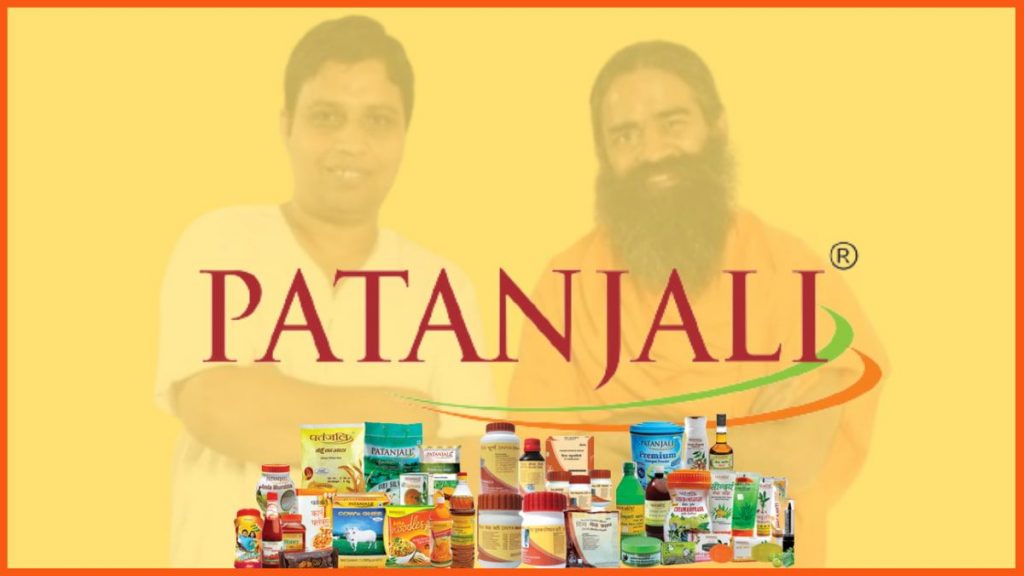The Marketing mix of Patanjali analyses the 4Ps of Patanjali, including the Product, Price, Place, and Promotions. Patanjali marketing mix utilizes several marketing strategies to create an efficient marketing tool to help the brand succeed in the FMCG industry and become the market leader. Yoga Guru Ramdev Baba and Patanjali Ayurved have become synonymous with each other as both actively promote natural and ayurvedic ways and a healthy lifestyle through the ayurvedic product segments of the company.
Most retailers and grocery outlets promote Patanjali products because of the high demand for herbal ones in the consumer market.
The. Patanjali marketing strategy and mix framework focuses on the Patanjali product strategy, diverse product offering, distribution strategy, and price strategy of Patanjali Ayurveda, as well as promotional and advertising strategy to align the business strategies and the marketing strategy of Patanjali Ayurved.
Table of Contents
Introduction: Patanjali Ayurved
#Patanjali Ayurved
- Origin Country: India
- Founders: Acharya Balkrishna, Baba Ramdev
- CEO & Owner: Acharya Balkrishna (94%)
- Founded: 2006
- Headquarters: Haridwar, Uttarakhand, India
- Employees in 2023: 2,00,000
- Annual Revenue in 2023: 4.02 billion USD
- Net Income in 2023: 80 million USD
The conglomerate Patanjali Ayurved is an Indian FMCG company that manufactures food products, personal care, ayurvedic medicine, and cosmetics. The Patanjali brand promotes natural and ayurvedic ways with the help of nearly 300 ayurvedic medications for treating numerous body issues.
The journey of Patanjali Ayurveda started with Divya Yoga Pharmacy, established in 1995 by Baba Ramdev and Acharya Balkrishna. Two followers of Baba Ramdev Sarwan and Sunita Poddar provided the loan for the existing brand Patanjali Ayurved. Baba Ramdev is Patanjali’s brand ambassador and face and has no stake in the company.
With a successful FMCG model and product strategy, the Haridwar-based holding company of Baba Ramdev dominates the ayurvedic product segments of the market and, with time, has established itself as a market leader in the industry.
Patanjali Product Strategy
Within a short time, the high popularity of the company website’s vast product range has helped the brand succeed and become one of the fastest-growing top Indian brands with natural products in the FMCG industry.
The existing brand is the leading Indian FMCG company whose entire product range targets and strategies promote using Indian products over foreign brands. The marketing mix of Patanjali Ayurved has a diverse product offering that includes 400 FMCG goods like beverages, healthcare, baby items, food items, ayurvedic products, beauty products, haircare, skincare, and dental care, etc., for both men and women.
The company manufactures naturally curated products free of any harmful chemicals that can harm consumers in any way. The product strategy in Patanjali Ayurved’s marketing mix focuses on product innovation and a diverse product portfolio so that it can cater to the needs of all consumers and their different product needs.
The new Product Mix of Patanjali in 2023 is as follows (Source).
- Ayurvedic Medicines: Includes a wide range of traditional medicines for various health concerns like diabetes, arthritis, digestive disorders, and more, made from natural herbs and ingredients.
- Personal Care Products: This category comprises herbal and natural products like toothpaste (Dant Kanti), soaps, shampoos, hair conditioners, hair oils, face washes, and skin creams. These products are marketed as natural and chemical-free alternatives to conventional personal care products.
- Healthcare Products: Patanjali offers a variety of health supplements and nutraceuticals, including Chyawanprash, health juices (like Aloe Vera juice and amla juice), and digestive products like herbal teas and health bars.
- Food Products: The food category includes staples like pulses, flour, rice, and spices, as well as processed foods like noodles, biscuits, breakfast cereals, and confectionery items. Patanjali also markets traditional Indian sweets and snacks.
- Beverages: Patanjali’s beverage line includes a variety of herbal teas, fruit juices, and health drinks. These beverages are often infused with Ayurvedic herbs and marketed as healthy alternatives to regular soft drinks.
- Home Care Products: This includes natural and herbal cleaning products like detergents, dishwash bars, and floor cleaners, offering eco-friendly and health-conscious alternatives for home hygiene.
- Beauty and Cosmetics: Patanjali has a range of beauty products, including herbal mehndi (henna), natural hair colors, and Ayurvedic cosmetics like kajal and lip balms.
- Baby Care Products: Patanjali has also ventured into baby care products, offering herbal and natural options for baby soaps, shampoos, and oils.
- Yoga and Fitness Products: Aligning with Baba Ramdev’s promotion of yoga, Patanjali sells yoga mats, apparel, and other fitness-related products.
- Books and Media: They also sell books, DVDs, and other media related to yoga, Ayurveda, and health.
Patanjali Place Strategy
Patanjali has spread its entire product range and presence to the Indian subcontinent and Middle-East Asia, with headquarters and manufacturing units in Haridwar, India. The products are available in Sri Lanka, Bangladesh, UAE, Nepal, etc. It operates with the help of its subsidiaries Ruchi Soya, Paridhan, Advance Navigation and Solar Technologies, Patanjali Renewable Energy Pvt Ltd, and Herboved.
Patanjali has partnered with companies like Future Group and Reliance Retail to sell its products. Nearly 5,000 retailers and grocery outlets promote Patanjali products in the consumer market.
Patanjali has nearly 5,000 franchise outlets and 3,00,000 stores across strategic locations across India to sell its products. The company operates as a franchise business model offering multiple franchises, like Gramodhyog Nyas, Patanjali Chikitsalaya & Arogya Kendra, Patanjali’s products, and Patanjali Mega Store.
The main production facility, Patanjali Food and Herbal Park, is located at Haridwar, with a $5.0 billion production capacity. The company has opened new production facilities in Indore, Nagpur and Noida.
Here’s the place strategy of Patanjali.
- Extensive Retail Network Across India: Patanjali has established a vast network of retail outlets across India, including exclusive Patanjali stores (Patanjali Chikitsalayas, Patanjali Arogya Kendras) and franchise outlets, ensuring widespread availability of their products in urban and rural areas.
- Online Presence and E-commerce Platforms: Recognizing the importance of digital reach, Patanjali has strengthened its online presence, selling products through its website and major e-commerce platforms, catering to the growing segment of online shoppers.
- Tie-ups with Supermarkets and General Stores: Patanjali products are also available in multi-brand supermarkets and local general stores, increasing their accessibility to a broader customer base and ensuring convenience in shopping.
- Strategic Location of Manufacturing Units: Patanjali strategically places its manufacturing units close to raw material sources and major consumer markets, reducing transportation costs and ensuring faster delivery of fresh products.
- International Expansion: Patanjali has been expanding its footprint globally, entering markets in the Middle East, USA, Canada, Europe, and several Asian countries, catering to the Indian diaspora and local populations interested in natural and Ayurvedic products.
Patanjali Pricing Strategy
The pricing policy in the marketing mix of Patanjali Ayurved focuses on a diverse product lineup portfolio and cheap Patanjali products so that the common masses can easily afford them. During price comparisons with other Indian or foreign brands, consumers will find that Indian products are much better in terms of both quality and price, hence the pricing strategy.
Most importantly, competition pricing of the products is in direct competition with another product of a rival brand. The company has to consider its target market and the rival brands that offer excellent quality at reasonable prices.
Patanjali Ayurved’s pricing strategy is a masterful blend of market penetration and value-based pricing, tailored to position the brand as affordable and of high intrinsic value. Here is Patanjali’s marketing mix and an expert breakdown of their approach:
- Penetration Pricing for Market Entry and Expansion: Patanjali initially employed penetration pricing, setting prices lower than established competitors. This strategy was instrumental in rapidly capturing market share in the highly competitive FMCG sector and attracting a broad base of cost-conscious consumers.
- Value-Based Pricing for Ayurvedic and Natural Products: Capitalizing on the perceived high value of natural and Ayurvedic ingredients, Patanjali prices its products to reflect their quality and health benefits. This approach appeals to health-conscious consumers who invest in natural and holistic wellness products.
- Cost Leadership Strategy: Leveraging economies of scale and efficient supply chain management, Patanjali maintains a cost leadership strategy, enabling them to offer quality products at lower prices than many competitors, thus appealing to a broad spectrum of consumers.
- Psychological Pricing Techniques: Patanjali often employs psychological pricing, setting prices at points that are perceived to be significantly lower (for example, pricing a product at ?99 instead of ?100). This strategy enhances the attractiveness of their products and can lead to increased sales volume.
- Dynamic Pricing in Response to Market Conditions: Understanding the dynamic nature of the FMCG market, Patanjali adjusts its prices in response to changes in raw material costs, competitive pricing strategies, and consumer demand trends, ensuring they remain competitive and relevant.
- Segmented Pricing Based on Product Categories: In its diverse product range, Patanjali adopts segmented pricing. For instance, essential products like toothpaste and soaps are priced very competitively. At the same time, specialized Ayurvedic medicines and health supplements may have a higher price point due to their unique value proposition.
- Promotional Offers and Discounts: To stimulate demand and reward customer loyalty, Patanjali often runs promotional offers, discounts, and bundling strategies, which are particularly effective in driving sales in new markets or during festive seasons.
Patanjali Promotion Strategy
Patanjali follows a solid and aggressive promotional and advertising strategy to boost its brand image. The company spends a lot on promotion planning and creating offline and online ads to attract customers to the brand’s products.
The company’s promotional and advertising strategy includes distribution strategies and the use of the following Patanjali promotion tools-
Traditional Media
Patanjali’s marketing strategy and promotion include using digital and print media like newspapers, television, radio, magazines, pamphlets, and hoardings to display its ad campaigns in the market.
Social Media Platforms
Patanjali is active on various social media platforms like YouTube, Facebook, and Instagram, connecting directly with the viewers and displaying online ads. The company’s online presence on Instagram is primarily in Hindi, which has helped the brand garner many followers.
Patanjali’s Brand Ambassador
Baba Ramdev is the brand’s ambassador who promotes the brand and its products in his camps and travels.
Some Recent Video ads and Print ads for Patanjali are:
Liked this post? Check out the complete series on Marketing Mix


what might be the media plan for patanjali?
Patanjali does marketing research?
It really worked. Thank u marketing 91. Was really very helpfull!!